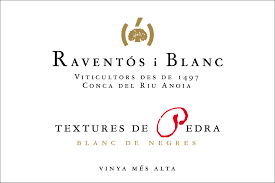I have recently been in Bairrada visiting some of the best producers. While I am working on a longer piece (and have indeed finished one for the Norwegian magazine Vinforum) I here give you another wine as our Wine of the Week. Last time I talked about the project of Dirk Niepoort, that together with Filipa Pato can be called the leading “modernist” producers, at least in the subtle, low-alcohol, low-extraction style. Compared to these, Mário Sérgio Alves Nuno can be dubbed “traditionalist”. But they are all “Baga Friends” (as the name of their group suggests), and I would say that the similarities overshadow the differences.
Quinta das Bágeiras produces wine from own vineyards at Fogueira, in northern Bairrada. Fogueira means something like bonfire in Portuguese, and you may have seen the flame on the labels. Mário Sérgio leads the family firm, and his son Frederico is now under education in enology. Winemaker Rui Alves (a defender of traditional expertise) and other good helpers have been with him for many years.
 Mário Sérgio and Frederico Nuno
Mário Sérgio and Frederico Nuno
The vineyards are treated in a natural way, without spraying and fertilizing, no yeasts are added, there is whole-bunch fermentation, foot-trodding in lagares of cement, and ageing on big wooden vats.
Mário Sérgio has always convinced us with the qualities of his colheitas, reservas and garrafeiras, both red and white. Quite recently he has expanded his portfolio with wines called Pai Abel (a hommage to his father, wines from a single vineyard on clay and limestone by Ancas, close to Fogueira) and Avô Fausto, a nod to his grandfather, who established the first vineyards).
I was tempted to chose his Super Reserva Rosé 2011, a super rosé with 12 months skin-contact and five years on the lees, a complex, tasty, herby sparkler. But the red bagas are the most prominent wines throughout the quinta’s history, and we end up with the Garrafeira 2005. It is approaching its peak (where these wines can stay for a long time).
Quinta das Bágeiras Garrafeira 2005
Dark, deep, showing beginning development. Super berry fruit (cherry, morello), but also some coffee and earthy, darker aromas. And here are enough tannins and acidity for a long life. Power and finesse!
Price: Medium
Leave a Comment
















